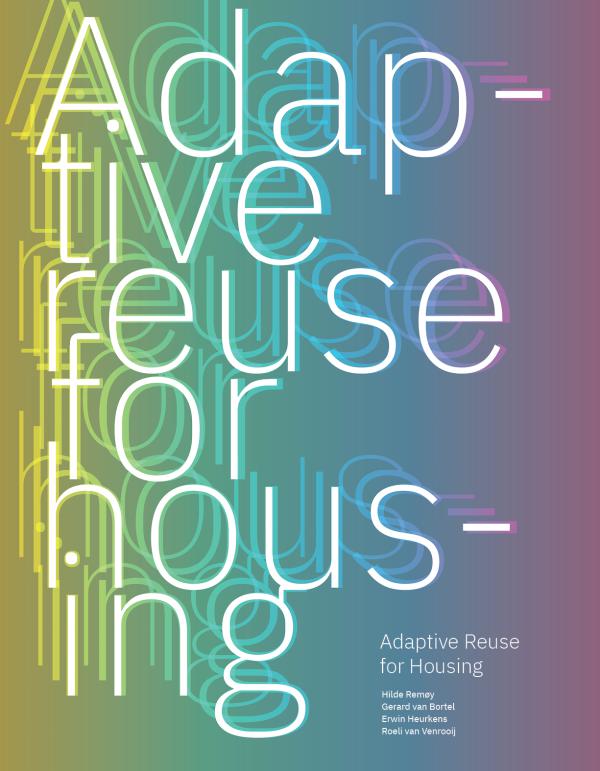
Synopsis
To address the current housing shortage in the Netherlands, approximately 90,000 new homes need to be added to the housing stock annually. Adaptive reuse of vacant buildings for housing contributes to achieve this aim. Until around 2014, adaptive reuse was seen as a solution to office market vacancy, which surged from around 5% nationwide in 2001 to nearly 15% in 2013. The high vacancy rates were partly a result of the dotcom crisis and the financial crisis. These crises, along with technological advancements and an increase in flexible working, led to a reduced need for office space, while an oversupply of office buildings was developed and constructed.
After 2014, a tipping point became apparent. Adaptive reuse was increasingly driven by the demand side of the housing market rather than the supply side of the office market. The focus on sustainable construction and the greening of the existing building stock increased. In the publication preceding this book Transformatie van kantoorgebouwen (Adaptive reuse of offices) from 2007, sustainability was hardly mentioned. At most, adaptive reuse was noted as inherently sustainable because the building was reused. However, due to rising energy costs, the costs of building materials, and the climate crisis, sustainability aspects such as energy-efficiency, circularity, and adaptability have become much more important, though they are not yet fully applied in the market.
Currently, the Netherlands has a high demand for housing, and at the same time many buildings remain vacant. Numerous urban areas comprise outdated office buildings that are no longer in demand or in (full) intended use. Across the country, churches are increasingly left vacant due to aging populations and secularisation. Industrial real estate loses its function as industries relocate from city centres to more accessible locations or abroad. School buildings are left empty as neighbourhoods age. Hospitals are vacated due to new concepts and scaling up of healthcare. Retail space is becoming vacant due to centralisation and online shopping. Thus, buildings originally constructed for these (and other) purposes can be adapted into housing.
The fusion of old and new buildings can potentially contribute to preserving local identity. When architecturally interesting buildings are involved, adaptive reuse also contributes to preserve cultural heritage. Adaptive reuse can support the greening of the building stock, reduce demolition waste and the use of raw materials. Moreover, adaptive reuse could contribute 10-15% to annual housing production.
The conclusion seems logical: adapt vacant buildings into housing. But it's not that simple. The owners of vacant properties and housing developers are not always able to agree on feasible plans for the building’s future destination. Adaptive reuse is different from new construction and therefore requires a different approach. There are also various financial, economic, legal, and policy challenges, such as uncertainty about financial feasibility and fear of lengthy procedures. This is why we have taken the initiative to publish this book now, at a time when we are amid both a housing crisis and a climate crisis. With this book, we aim to provide more insight into the opportunities and challenges of adaptive reuse. We give voice to actors who have gained experience from different perspectives, and we discuss projects that showcase the breadth of Dutch adaptive reuse practices.
This book was written by researchers from the TU Delft, but also various experts from industry contributed. This has resulted in a wide range of themes. Adaptive reuse is examined from different angles, with a focus on feasibility. We then discuss adaptive reuse as a sustainable design, development, and management strategy. The role of different actors is highlighted in the perspectives section: property owners, investors, developers, as well as housing associations, architects, users, and governments. Finally, we present a number of adaptive reuse projects to illustrate best practices.





